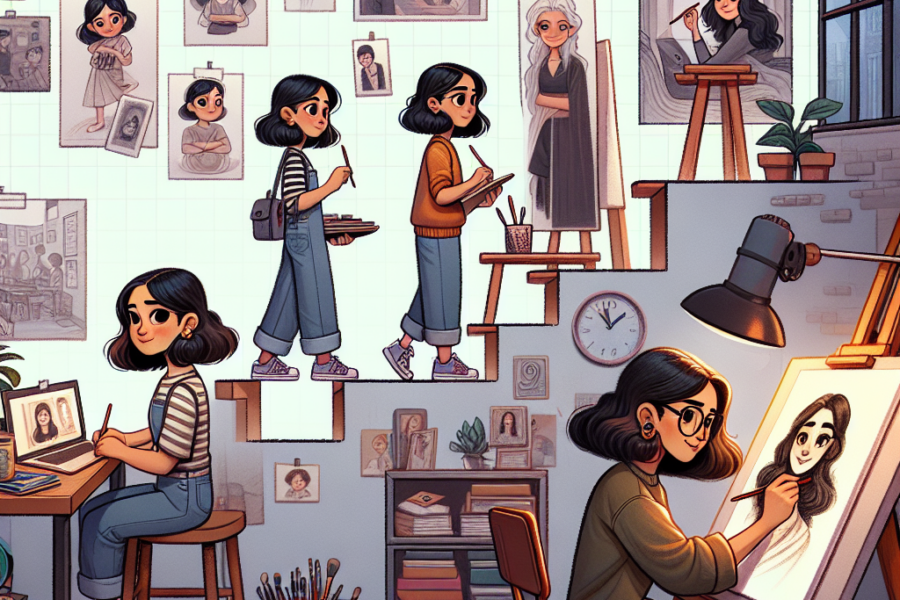Introduction to Sustainable Design in the Art World
Sustainable design is a design philosophy that seeks to create products and systems that are environmentally responsible and resource-efficient throughout their life cycle. In the art world, sustainable design principles can be applied to a wide range of practices, from choosing materials to creating exhibitions and installations. Artists who embrace sustainable design are committed to reducing their environmental impact while still creating beautiful and compelling works of art.
Using Recycled Materials in Art
One of the most common ways that artists can embrace sustainable design is by using recycled materials in their work. By repurposing materials that would otherwise end up in a landfill, artists can not only reduce waste but also create unique and interesting pieces of art. Recycled materials can include everything from paper and cardboard to plastics and metals, and artists are constantly finding new and innovative ways to incorporate these materials into their work.
Embracing Renewable Energy Sources
Another way that artists can practice sustainable design is by embracing renewable energy sources in their studios and exhibitions. By using solar panels, wind turbines, or other renewable energy sources, artists can reduce their reliance on fossil fuels and lower their carbon footprint. Renewable energy sources can also inspire artists to create work that celebrates the beauty of nature and the importance of sustainability.
Choosing Non-Toxic and Eco-Friendly Materials
In addition to using recycled materials, artists can also choose non-toxic and eco-friendly materials in their work. Traditional art supplies can contain harmful chemicals that are damaging to the environment and to the artist’s health. By opting for environmentally friendly alternatives, artists can create art that is not only beautiful but also safe for the planet and for themselves. Eco-friendly materials can include water-based paints, natural dyes, and organic fabrics, among others.
Creating Sustainable Exhibitions and Installations
Sustainable design practices can also be applied to the creation of exhibitions and installations. By choosing sustainable materials and practices when planning an exhibition, artists can reduce their environmental impact and create a more eco-friendly experience for visitors. This can include everything from using energy-efficient lighting to creating installations that raise awareness about environmental issues.
Challenges and Opportunities in Sustainable Design
While there are many benefits to embracing sustainable design in the art world, there are also challenges that artists must navigate. Some artists may find it difficult to source sustainable materials or to afford eco-friendly alternatives. Additionally, the art world can be slow to change, and artists may face resistance from galleries, collectors, and other stakeholders who are not yet fully committed to sustainability.
Despite these challenges, there are also many opportunities for artists who embrace sustainable design. By prioritizing sustainability in their work, artists can differentiate themselves in a crowded market and attract a growing audience of environmentally conscious consumers. Artists who are committed to protecting the planet can also inspire others to take action and make a positive impact on the world.
Supporting Artists Who Embrace Sustainable Design
As consumers, we have the power to support artists who are committed to sustainable design practices. By choosing to purchase art from environmentally conscious artists, we can help to create a market demand for sustainable art and encourage other artists to follow suit. Additionally, we can support galleries and organizations that promote sustainable design in the art world and advocate for policies that protect the environment.
Conclusion
In conclusion, sustainable design is becoming increasingly important in the art world as artists seek to reduce their environmental impact and create works that reflect their commitment to the planet. By using recycled materials, embracing renewable energy sources, choosing non-toxic and eco-friendly materials, and creating sustainable exhibitions and installations, artists can make a positive impact on the world around them. As consumers, we can support artists who embrace sustainable design by choosing to purchase their work and by advocating for sustainable practices in the art world. Together, we can create a more sustainable future for all.







Leave a Comment